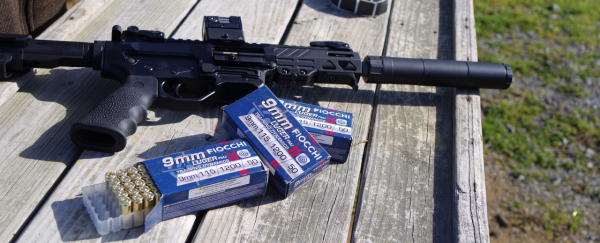It was difficult for SIG Sauer to wait for the U.S. Army to announce SIG’s selection as the provider of the Next Generation Squad Weapons System (NGSW). For twenty-seven months, the contenders for that lucrative contract have been tested and evaluated, but the news of the ultimate decision was given nearly a month ago. Since then, I’m told, it’s been hard to keep the smiles and satisfaction at winning the contract under wraps.
Yesterday, with the acknowledgement of having won a coveted contract that could, ultimately, be worth billions, the wraps came off.


Speaking -briefly- with SIG officials, it’s obvious they’re not just proud to have won the contract, they’re honored at the opportunity to provide our soldiers with their new XM-250 light machine gun, XM5 MCX-“Spear” rifles and, SIG SLX suppressors.
SIG President & CEO Ron Cohen has been working toward this for longer than many realize. At a conversation at SHOT Show three years ago, he told me that one goal he set for the company was to produce a “superior cartridge and weapon system” to make our solders even more lethal. Three years ago, it didn’t seem very realistic to think that the Army -with a reputation of making armament changes at speed slightly smaller than glaciers- would embrace the idea of a “new” cartridge, especially one that got “more out of less”(material-wise). Yet the 6.8x51 FURY Hybrid will be coming online, bringing with it increased lethality.
For SIG, this is the latest “win” in a very high-profile area. While military and government contracts don’t yield the margins of civilian success, they certainly bring a cachet and pull along benefits that is undeniable.
And when the United States Army adopts something, it’s not unreasonable to believe that other branches will follow, along with allies around the globe. It’s not automatic, but neither would it be unprecedented.
We, of course, will keep you posted.
The news for the rest of us, however, isn’t quite so positive. The National Association of Sporting Goods Wholesales (NASGW) released their SCOPE report for Q1 of 2022. And the analysis by NASGW’s Senior Data Analyst Tom Hopper tells the story for the firearms market in a single sentence: “The firearms market ‘Surge of 2020’ is effectively over.”
Hopper’s analysis isn’t all bad, but it is confirmation that the panic buying levels of last year have slowed. Inventories are building in the supply channel, and while the numbers indicate a drop of -23% over last year’s orders, it’s worth noting that that’s still more than 25% higher than the sale numbers for 2019. In other words, there’s a “new normal” in retail -and it’s significantly improved over the previous “normal.”
Ammunition, however, hasn’t seen either the slowing of demand or catchup of inventory. That’s not an unreasonable situation, as there are many more gun owners today than in 2019. And anecdotal evidence from around the country says these new gun owners aren’t just buying guns, they’re shooting them.

And the NICS reports for Q1 2022, while reduced over 2021, deflate any argument that Americans want guns out of society. While NICS checks are down 23% compared to the same quarter last year (the panic buying year), they’re continuing a ten-year growth pattern. NICS numbers for Q1 2022 are up an impressive 25% over 2019.
That’s not saying everything is solid for 2022. The consumer (that’s us for the most part) is facing lots of uncertainties, and they’re not resolving off anytime soon. As the SCOP report notes, the war in the Ukraine has ratcheted up tension globally.
Factor in rising food prices, uncertainty over fuel and price volatility and hikes in interest rates and there are far more potholes in the road for consumers than firearms inventories and ammo supplies.
The SCOPE report contains a lot of insight into what retailers are seeing region-by-region. And it’s worth noting that the data doesn’t reflect all sales across the shooting sports industry. That having been said, it’s another excellent tool to get a sense of what’s really happening with guns, as opposed to a highly-filtered and innately biased mainstream media work.
As always, we’ll keep you posted.
— Jim Shepherd